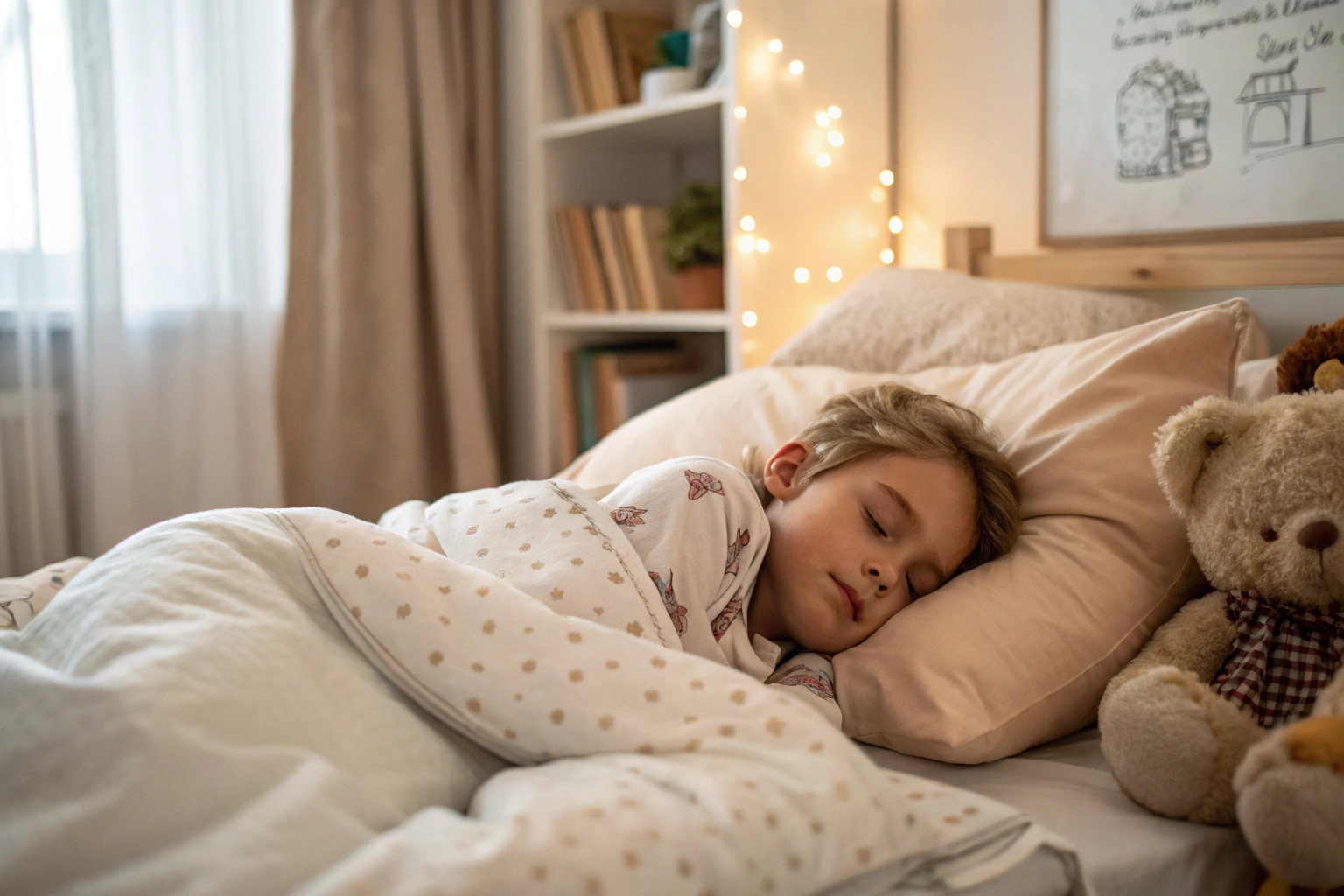Sleep is one of the most important elements of a child’s development—and what they wear to bed plays a bigger role than most parents realize. As a children’s apparel manufacturer, I’ve worked with clients around the world to perfect nighttime wear that ensures comfort, safety, and peaceful sleep.
When choosing bedtime clothes for children, prioritize soft, breathable fabrics, safe construction, and climate-appropriate designs. Pajamas aren’t just for style—they’re functional garments that impact how well a child sleeps.
Whether you’re a parent, brand owner, or buyer sourcing children’s clothing, understanding what makes great sleepwear can help you avoid returns, customer complaints, and even safety risks. Let’s dive in.
What fabrics are safest and most comfortable?
Not all fabrics are created equal. Parents and buyers often assume all “soft” materials are good, but some trap heat or irritate sensitive skin. This is especially true in budget-oriented production lines where synthetic blends are used to cut costs.
Organic cotton is the best choice for children’s sleepwear due to its breathability, softness, and skin-friendliness. Bamboo is another excellent option, offering natural antibacterial properties and great temperature regulation. Avoid rough or synthetic materials, especially for infants and toddlers.
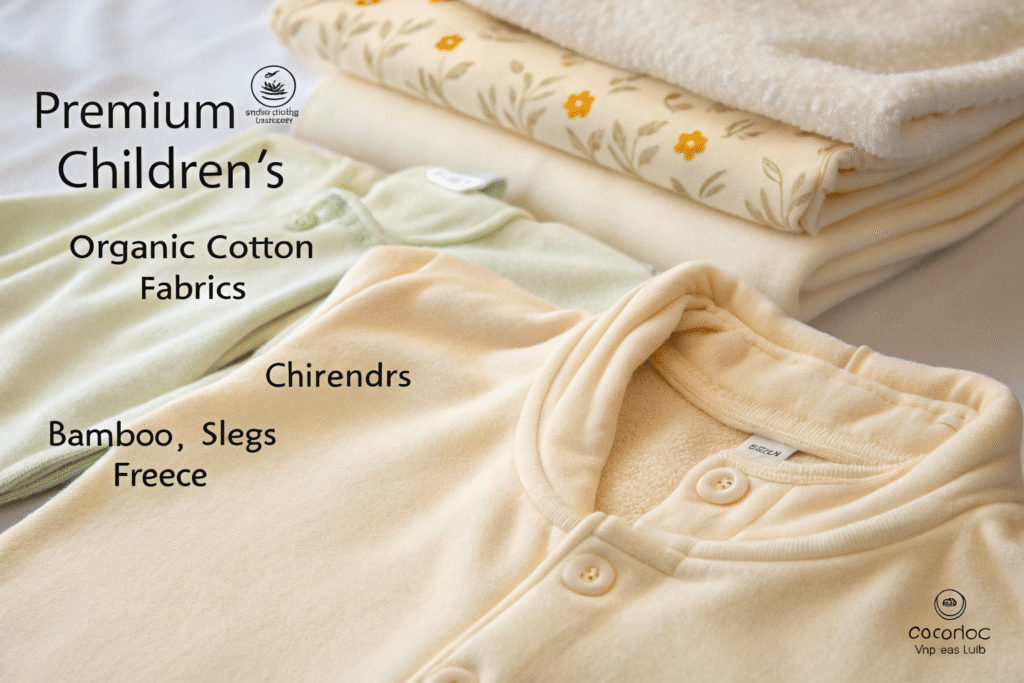
Why is organic cotton so widely recommended?
It’s hypoallergenic, doesn’t require chemical processing, and feels soft from day one. It also performs well in both warm and cool environments, reducing the risk of overheating or chills at night.
Should fleece or polyester be avoided?
In general, fleece can be cozy in winter but may cause sweating. Polyester blends often lack breathability. We recommend using natural blends and only relying on fleece for cold climates—with moisture-wicking lining inside.
What design features make pajamas safe?
Many buyers focus on visuals—prints, patterns, matching sets—but overlook one crucial factor: garment safety. Poorly designed pajamas can irritate, entangle, or even pose fire hazards.
The safest pajamas have no loose strings, small buttons, or rough seams. For infants and toddlers, snaps or zippers with fabric covers are preferred. Elastic waistbands must be snug but not tight, and stitching should lie flat against the skin.
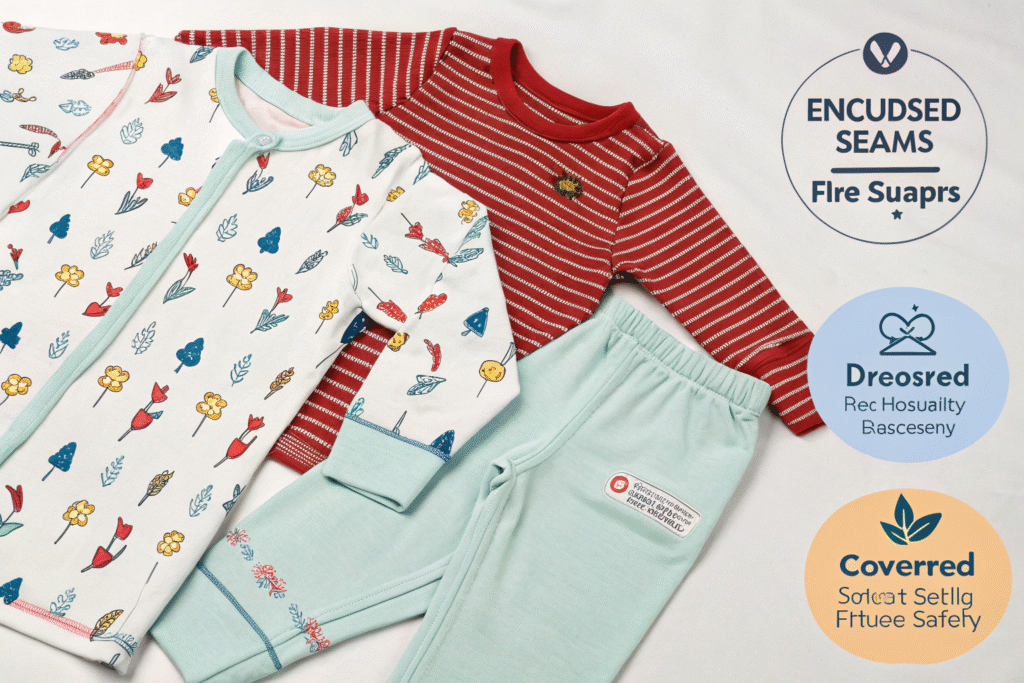
Are fire safety standards required?
Yes—in the U.S., sleepwear for children must comply with flammability standards. Garments should be either snug-fitting or treated with flame-resistant materials. As a factory, we regularly produce according to ASTM and CPSC regulations.
What should buyers watch for in baby sleepwear?
For babies, sleep sacks, footed pajamas, and onesies with double zipper guards are ideal. No hoods, no ribbons. Every feature should protect soft skin and reduce nighttime hazards.
How does temperature affect sleepwear choices?
One of the biggest mistakes buyers make? Choosing “year-round” pajamas. Children’s bodies regulate heat differently from adults. Overheating or underdressing can lead to night waking, sweat rashes, or even illness.
In hot climates, choose short-sleeve, loose-fitting organic cotton pajamas. In colder seasons, layering is key—long sleeves, leggings, and a sleep sack or thermal base layer. The goal is comfort, not heavy insulation.
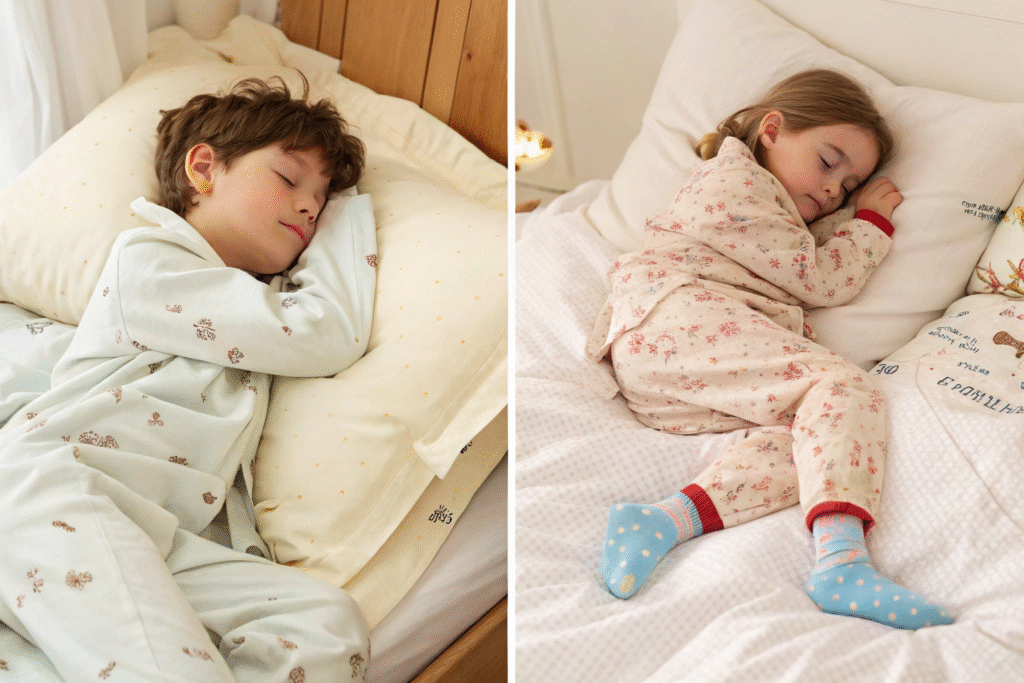
What signs show a child is too hot or too cold?
If a child kicks off covers, sweats at the neck, or has flushed cheeks, the pajamas are likely too warm. If they wake up cold or curled up tight, add a layer or choose warmer materials.
Do materials perform differently by season?
Absolutely. Cotton excels in breathability and adaptability, while fleece or wool work best as outer layers. Bamboo’s cooling effect makes it a favorite in humid climates.
What else should parents and buyers consider?
Besides fabric and design, think about aftercare, sizing, and how children move at night. Kids often twist, turn, and kick during sleep—so flexibility and durability matter.
Sleepwear should allow free movement, hold up after repeated washing, and be easy for children or parents to put on and remove. This makes nighttime routines smoother and encourages independence.
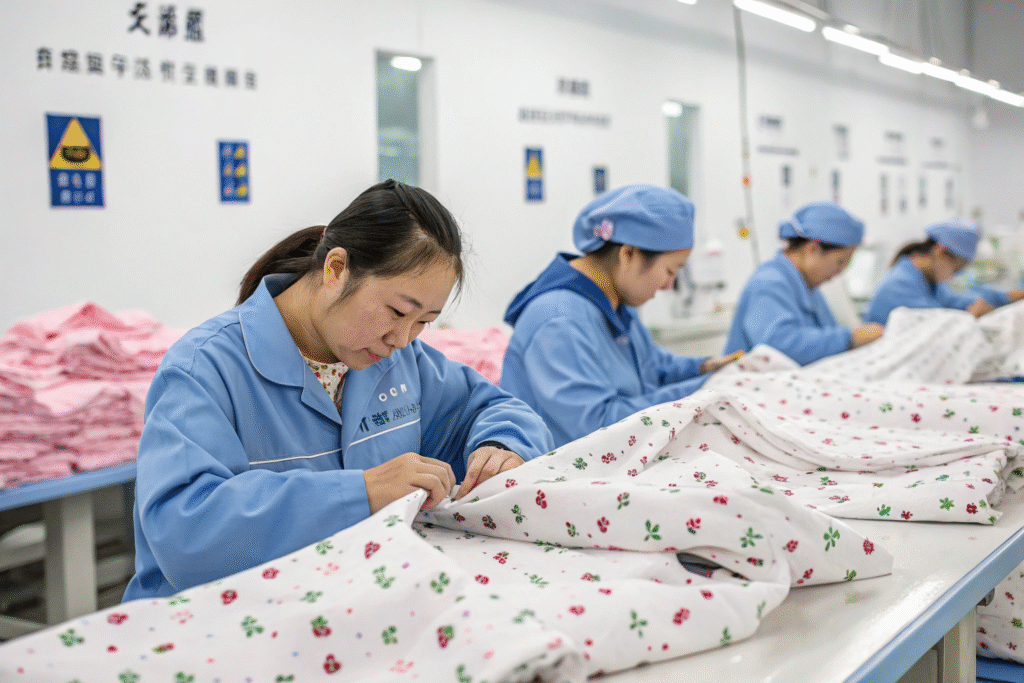
Are size ranges standardized?
Not really. A 4T in one brand might fit like a 5T in another. As a manufacturer, we recommend providing detailed size charts based on body measurements, not just age.
What’s the buyer’s checklist?
- ✅ Breathable natural fabric
- ✅ Fire-safety compliant
- ✅ Covered zippers or snaps
- ✅ Flexible sizing
- ✅ No choking hazards
- ✅ Easy wash care
By focusing on these, buyers can ensure satisfaction for end users and reduce return rates.
Conclusion
Choosing the right pajamas for children isn’t just about cute designs. It’s about comfort, safety, fabric quality, and usability. Whether you’re a parent or an international brand sourcing from a factory like ours, understanding the deeper details of what goes into good sleepwear helps you make better decisions. At Fumao Clothing, we partner with brands across the world to deliver safe, soft, and season-appropriate kids sleepwear that meets both standards and expectations.

